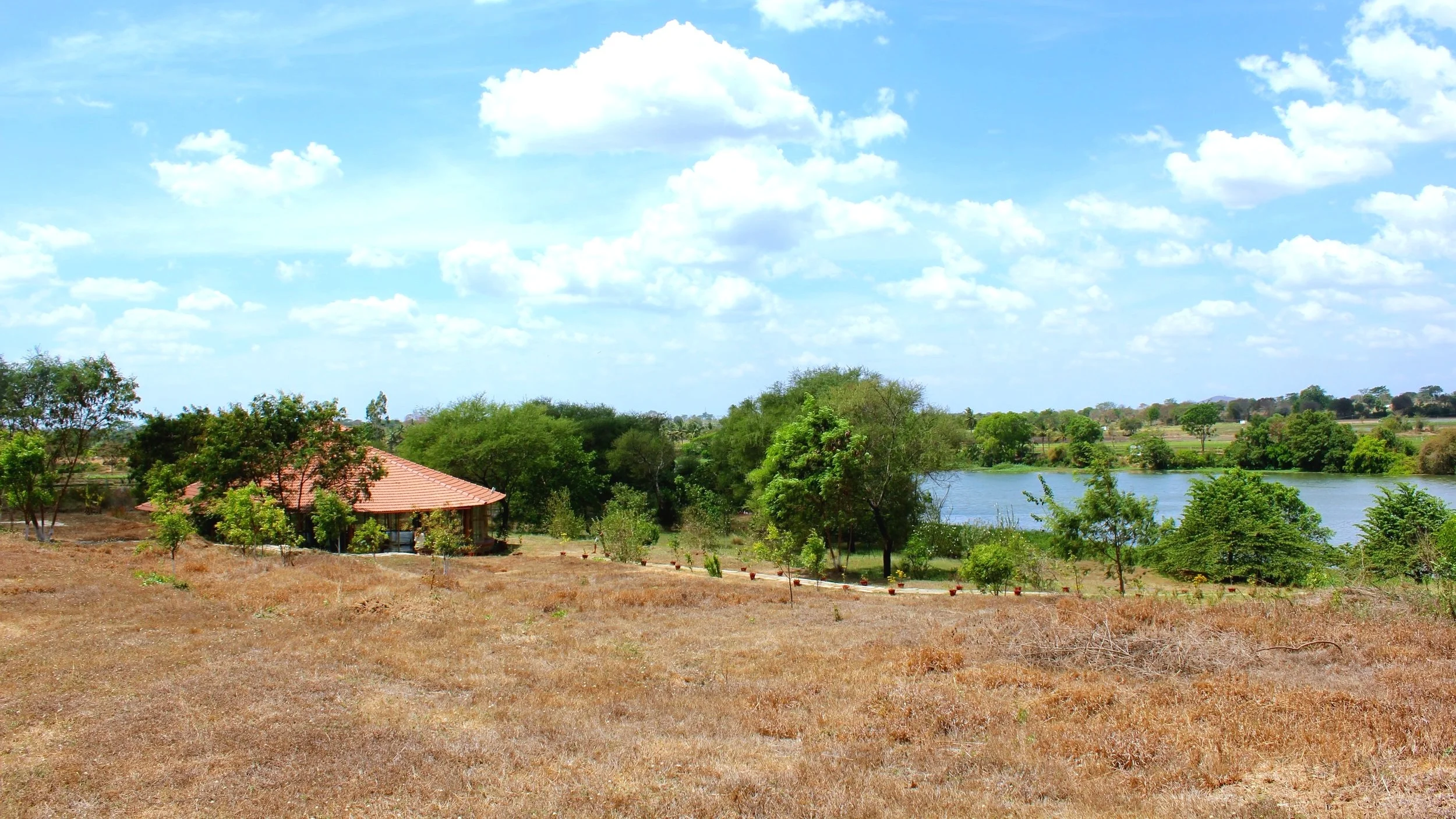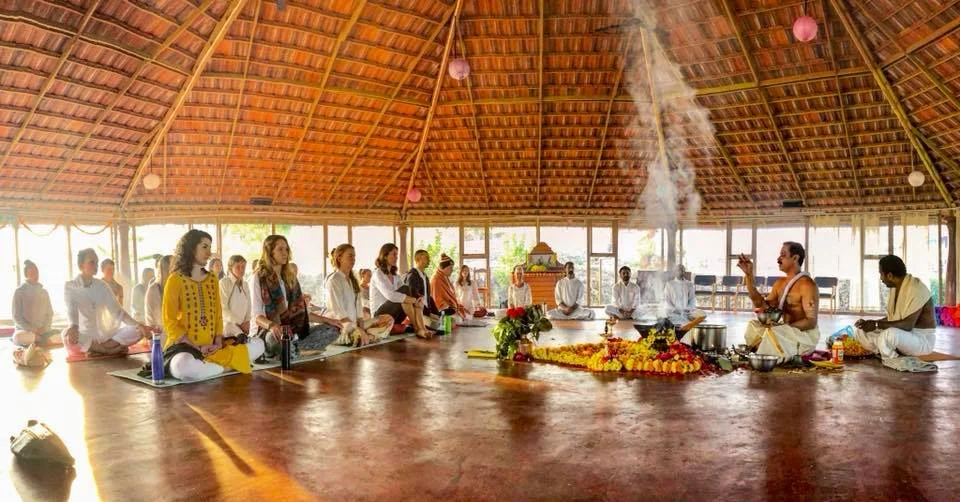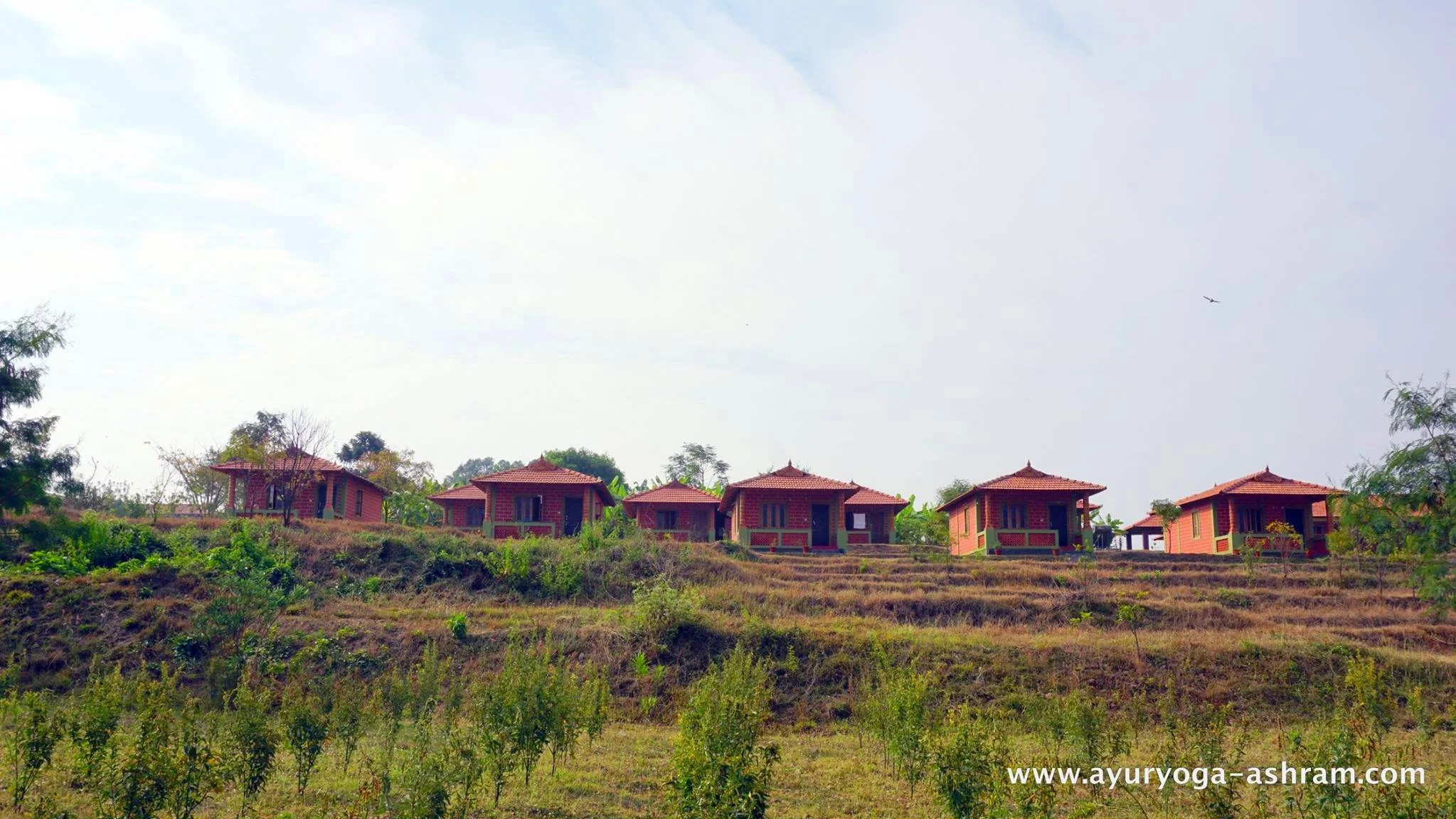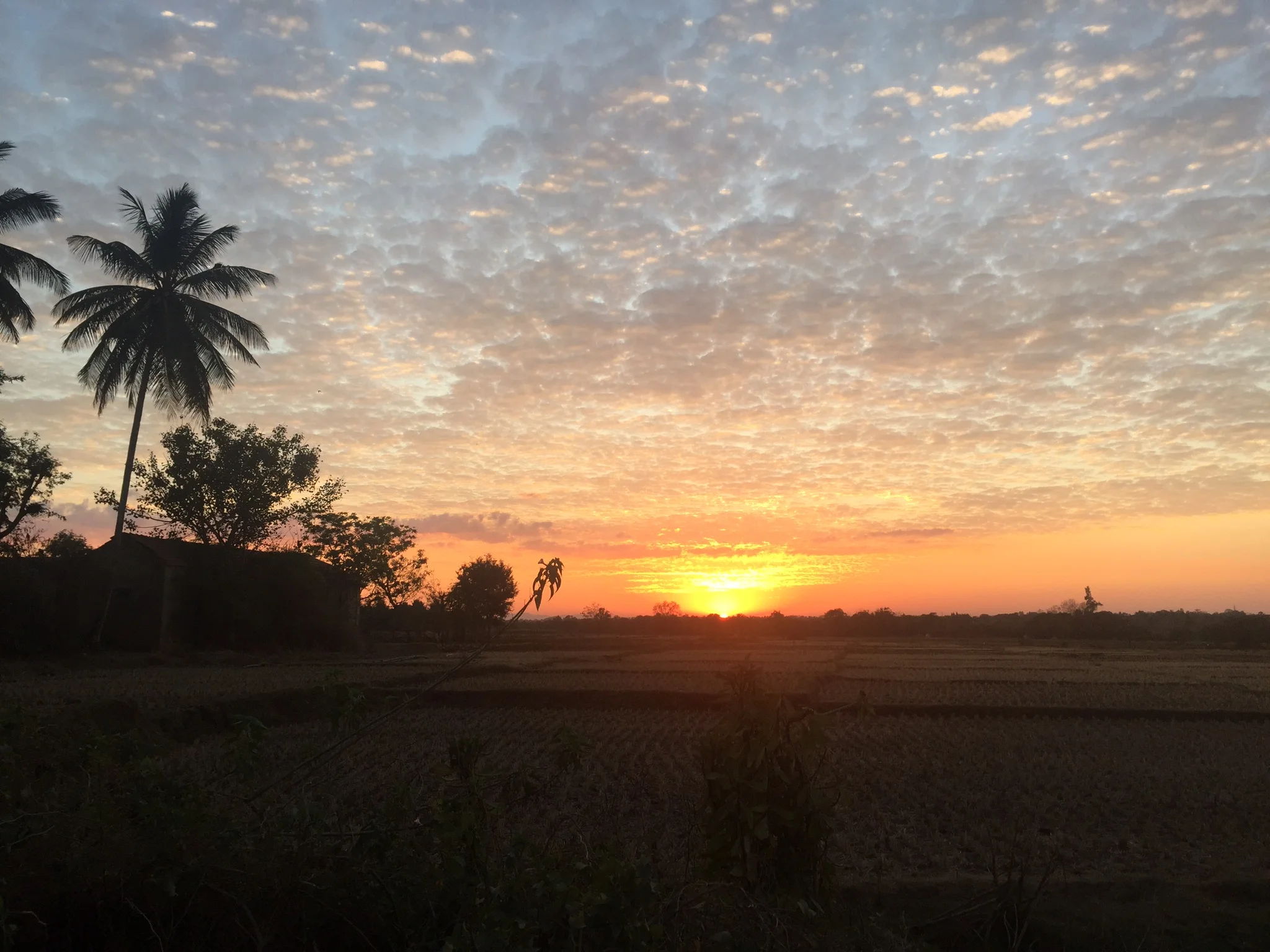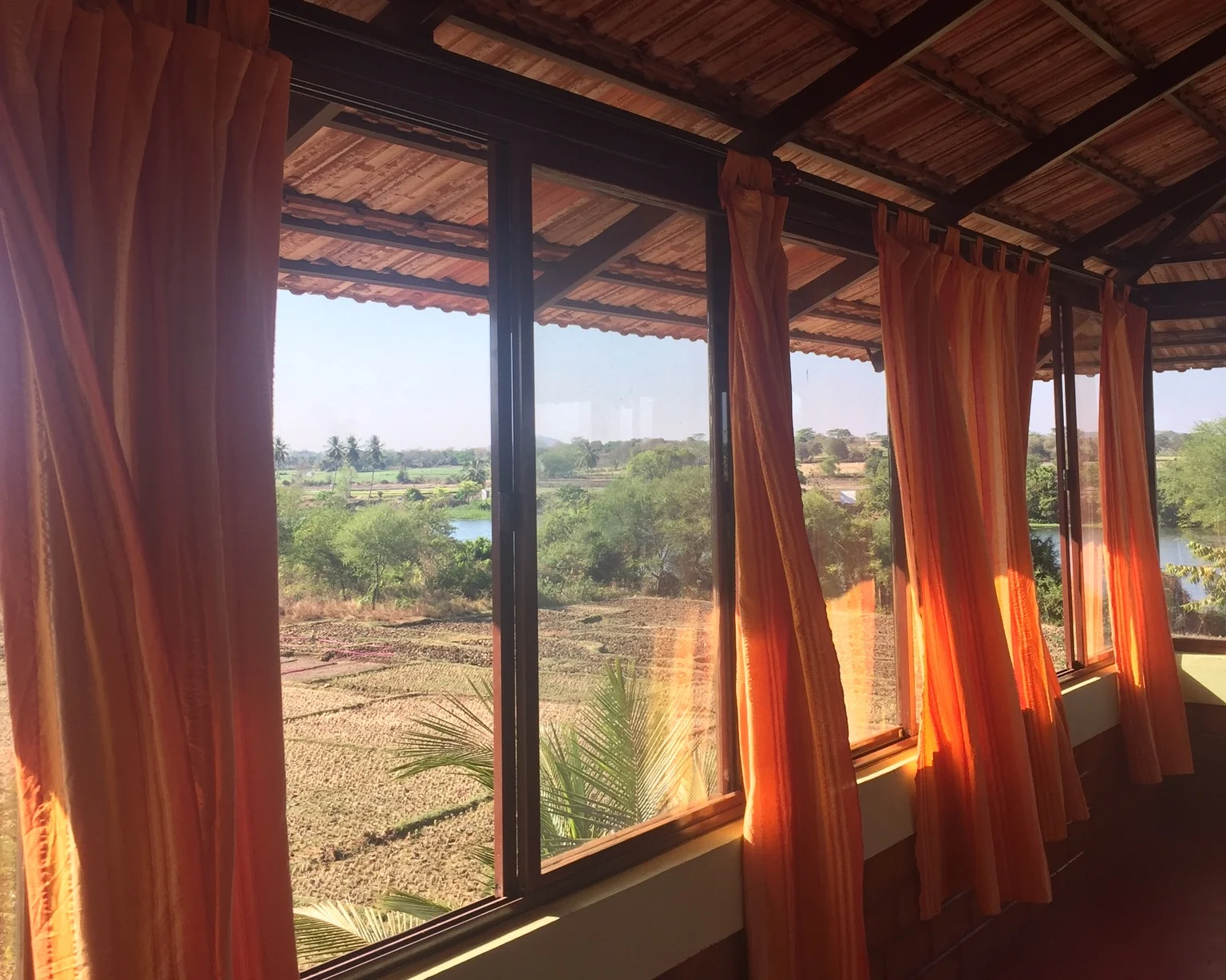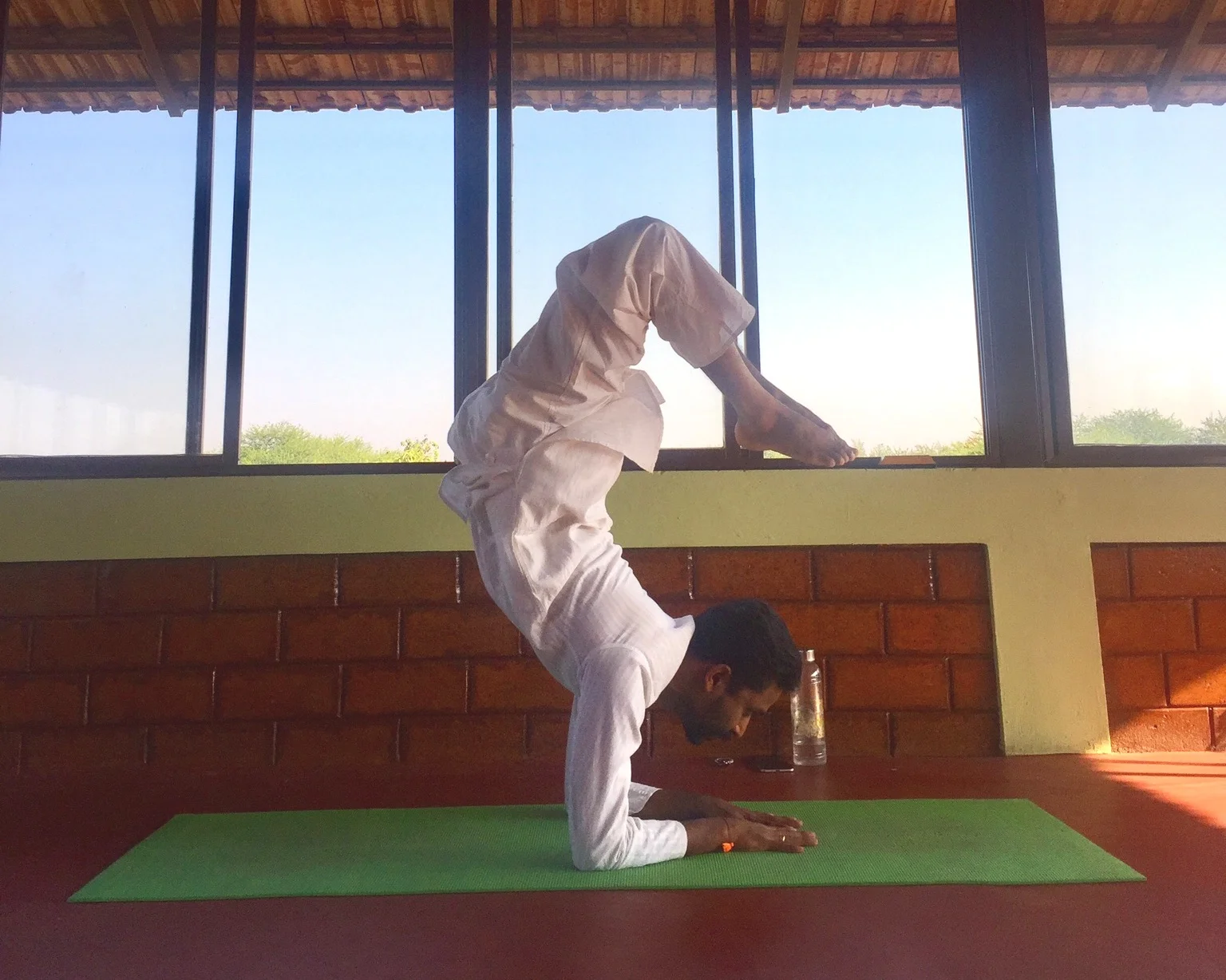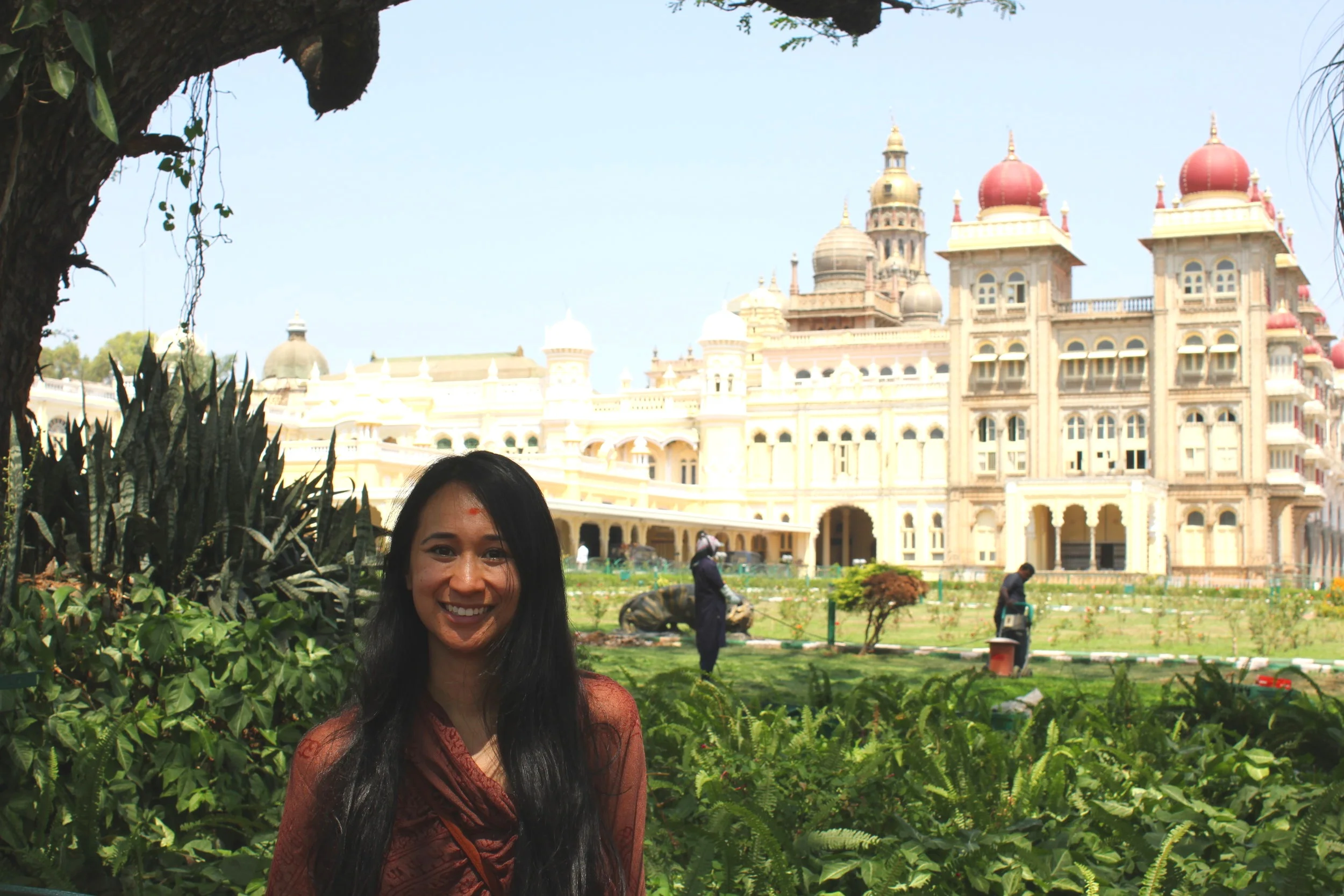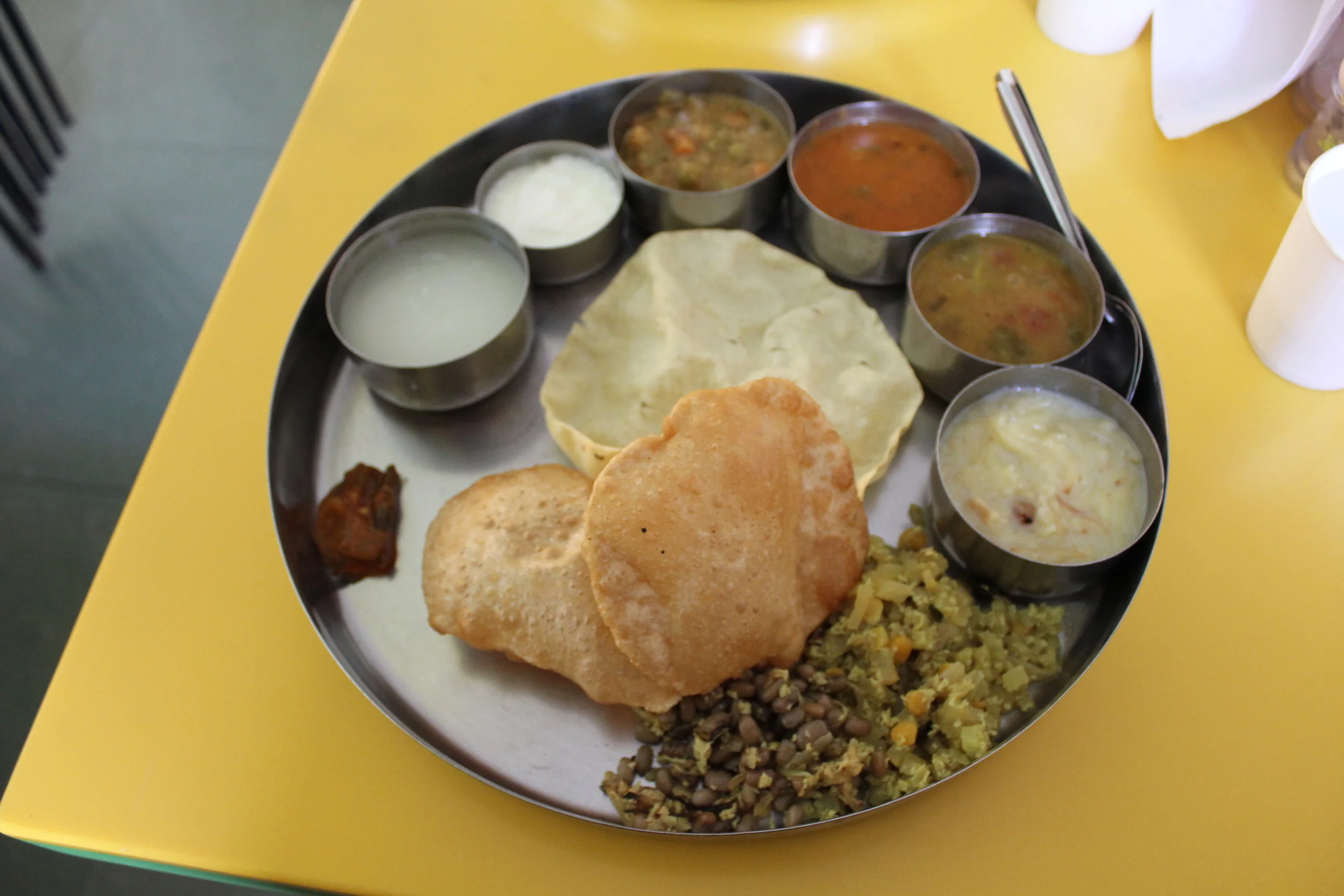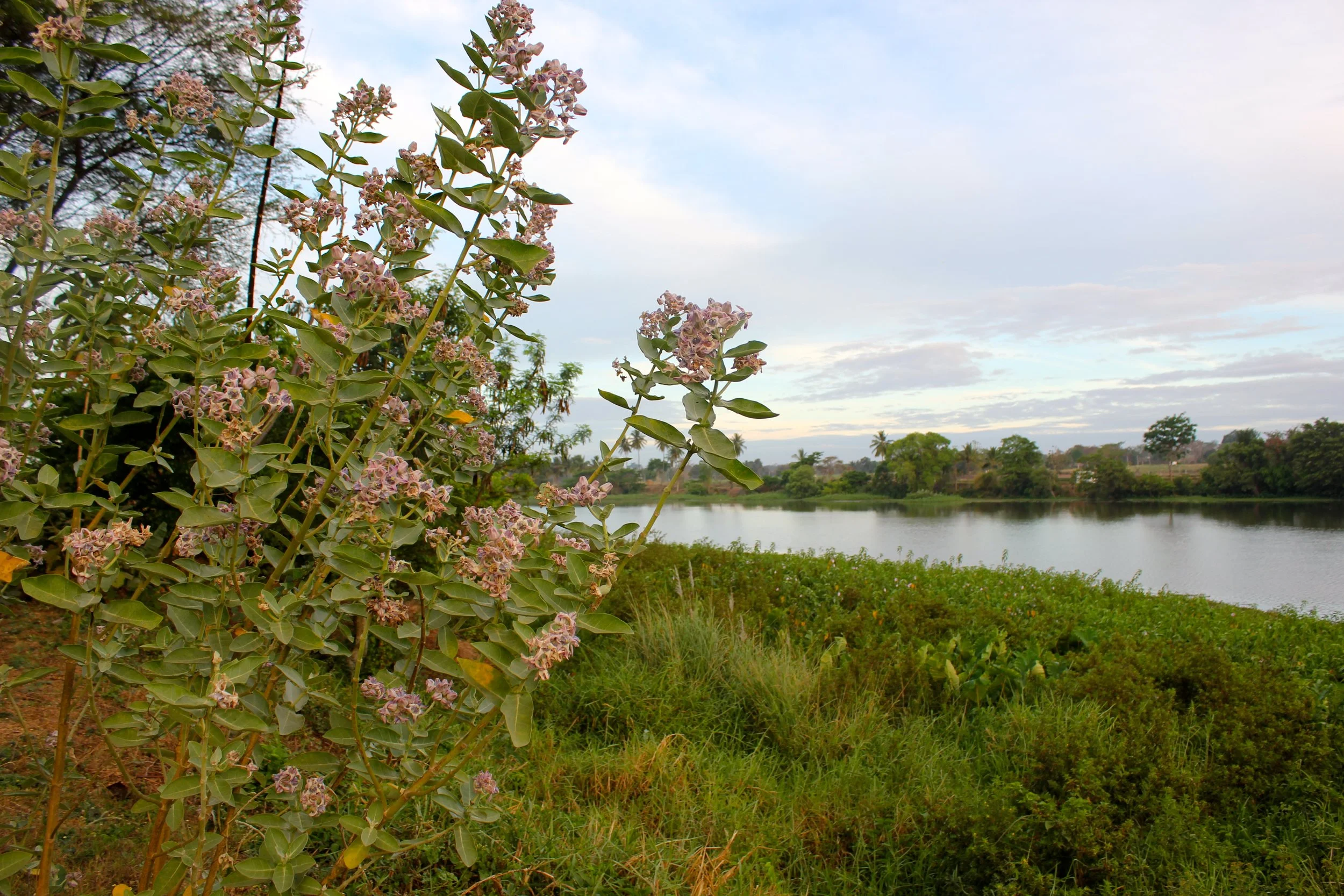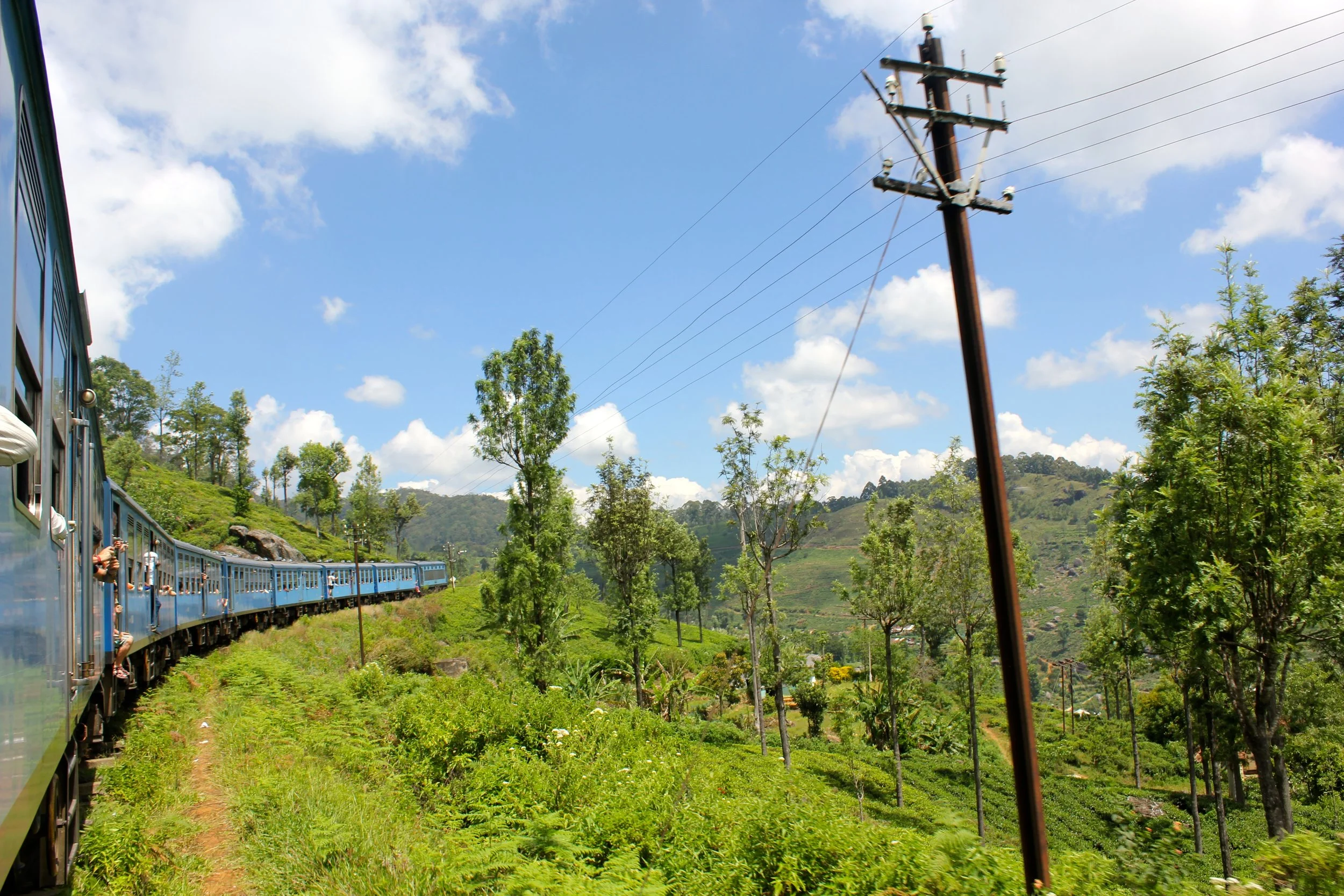AyurYoga Eco-Ashram: Yoga Teacher Training and Retreat in India
After a decade of practice and two years of teaching, I finally made it to the birthplace of yoga. For years I wanted to learn more about the ancient tradition of yoga beyond what was offered in my local studios in New York - so what better place than Mother India.
Sunsets at the ashram
Aside from yoga, I also wanted to learn more about the Indian culture and experience an Indian ashram. For countless hours, I was determined to find my “ideal" ashram in a peaceful, natural setting to learn more about the Hatha Yoga tradition. There were so many options to choose from, mostly in Rishikesh, but I wanted to veer away from a crowded Indian city.
AyurYoga Eco-Ashram showed up on my google search bar and I instantly fell in love with the website’s beautiful photos of the Indian countryside. The connection via my laptop screen was so strong that I was convinced AyurYoga Eco-Ashram was the one. So without any personal referrals I trusted the internet and booked a solo journey to Mysore, India.
What is an ashram?
Chakra Hall - the main hall of the ashram
The first time I ever heard about an “ashram” was when I read Eat Pray Love during college. I was so intrigued by the concept and knew that one day I’d spend time in an ashram in India. After practicing yoga for almost a decade, India was calling my name and it was time to make the trip.
Traditionally, an ashram is a spiritual hermitage or monastery in India. Today many Indian ashrams are geared towards Westerners, but many still preserve ashram traditions. The purpose of an ashram is to take a step back to the basics and become independent of regular habits, patterns, and indulgences. Many people seek clarity in an ashram whether it’s from past traumas, depression, or crossroads - while others are there to “find themselves” and take a break from reality. Ashrams create a sacred space for like minded individuals to meditate, practice yoga, detox, self reflect, and expand spiritual consciousness.
There are hundreds of ashrams in India ranging from luxury accommodations to basic dorm facilities, and some you can even work in exchange for lodging. Prices vary but a month in any ashram in India will be cheaper than any yoga teacher training in the USA. Whatever type of ashram experience you’re looking for, you can find it in India.
Why I Chose
AyurYoga Eco-Ashram…
AyurYoga Eco-Ashram March ‘18 family
TRANQUIL LOCATION
Yoga teacher trainings are not easy so I wanted the ashram location to be as peaceful as possible (especially since I’d be living there for the month). I envisioned waking up to vibrant flowers, lush trees, birds chirping, and a body of water - not a polluted city with chaotic traffic and aggressive hagglers.
Just an hour away from Mysore city, AyurYoga Eco-Ashram felt like a world away. The ashram's tranquil setting in the Indian countryside was exactly what I was looking for. Days were intense but the ashram’s peaceful setting in nature kept me grounded.
TRADITIONAL HATHA YOGA CURRICULUM
I learned a lot about my physical asana practice during my first teacher training, but the training was mostly for a certification to work and teach. After 2 years of teaching I was ready to dig deeper than the physical and I wanted to be challenged mentally and spiritually.
From ceremonial puja, early meditation (satsang), neti pot in the mornings, intensive yoga classes, asana workshops, anatomy and history classes, spiritual talks, mantra chanting, and ending the course with 108 sun salutations - AyurYoga Eco-Ashram’s authentic curriculum was the perfect mix.
NON-DOGMATIC PERSPECTIVE OF YOGA
One of my teachers described yoga like pizza - there are different types of pizza from pepperoni to pineapple and to thin crust to deep dish. But at the end of the day they're all pizza! Same goes for yoga, there are many styles of yoga (from Bikram, Ashtanga, Iyengar, and Yin) and at the end of the day they're all Hatha Yoga.
I loved the holistic approach to yoga at the ashram. The teachers didn’t impose a particular style, ideology, guru, or school of thought. Instead the teachers break down the history and traditions of Hatha Yoga and how it became the multifaceted entity it is today.
AUTHENTIC TEACHERS FROM INDIA
Yoga in the West is extremely different to what it is in India. Before my trip to India, I learned most of what I knew about yoga from caucasian men in their 30s/40s. Even when I went to Bali a few years ago I expected to learn from authentic teachers but was disappointed that most of the yoga instructors were Australian ex-pats. Don’t get me wrong, they’re all great in their own ways, but it was time for a change in perspective. I wanted to learn more about yoga beyond “exercise benefits” from experienced teachers who are from India.
I am eternally grateful for everything I learned from my teachers Vinod, Sanjay, Swami Prabodh, Krish, and Uni. All five of them have spent many years in monasteries and ashrams across India - from Sivananda/ Bihar Schools of Yoga and Vivekananda Monasteries. My time at the ashram learning from them has been the most pivotal part of my yoga journey.
BASIC WESTERN ROOMS & AMENITIES
The lodging at the ashram isn’t luxurious but it has all the basic amenities you need - comfortable bed, fully equipped bathroom, dresser with drawers & mirror, outdoor balcony, and ceiling fan. Plus the staff cleans the rooms and changes bedsheets/ towels once a week.
There are two options for lodging: Private rooms or Twin-Shared rooms. The private rooms are a bit more expensive but I chose it for for the month and it was well worth it. I had my own space but didn’t feel lonely since I had neighbors next door whenever I needed company or advice.
ORGANIC & VEGETARIAN FARM ON SITE
My biggest concern wasn’t the intensive curriculum and yoga classes, it was the vegetarian ONLY meals. Before the ashram I was your typical Filipino meat lover. But after staying in the ashram for 1 month, believe it or not, I made the switch to vegetarian (yes the ashram’s food was THAT good).
All the ingredients were grown on the ashram’s organic farm. Breakfast, lunch, and dinner were buffet style everyday and the selection was never short of exciting. Indian food is truly the best vegetarian food in the world and after all my travels in India, the ashram’s food was by far the best.
The vegetarian diet was new to my Filipino appetite, but eating with my hands was definitely not. Mornings till 12PM were "quiet time" and everyone ate their lunch with their hands in silence. Whether it was extreme silence or energetic conversations, meals at the dining halls were my favorite parts of the day.
*All meals (breakfast, lunch, snacks, and dinner) are included in the price*
AYURVEDA RESOURCES
Aside from yoga teacher trainings, the ashram also offered Ayurvedic services and retreats. The Ayurveda center on site is managed by a certified Ayurvedic doctor from Kerala (the birthplace of Ayurveda). Ayurvedic services on site was a bonus- especially when someone was sick or had digestive problems.
At the end of our teacher training we had the opportunity to learn about the fundamentals of Ayurveda. I scheduled a private consultation with the Ayurvedic doctor to learn more about my “body’s constitution” (very interesting and highly recommend). After my consultation I booked a traditional Ayurvedic massage based on body’s constitution (since I had too much heat in my body, the doctor created a customized cooling oil with herbs for my massage). It was quite different compared to massages I’ve had in the past - but regardless, I felt incredible after.
ALTERNATIVES TO YOGA TEACHER TRAINING
If a yoga teacher training for one month is too much for you, there are other options offered at the ashram. The ashram offers 2 week intensive yoga or ayurvedic retreats, and if you want to split up your 200 hour yoga training that’s possible as well. For those of you who are already experienced yoga instructors and want to further your education, there's also a 300 hour yoga teacher training available.
AFFORDABLE PRICE
Just to put it in perspective:
+ My first teacher training in New York City cost $3,000 and the price ONLY included the course.
+ AyurYoga Eco-Ashram's teacher training cost $2,700 and the price included the course, private lodging, all meals, books, AND a yoga mat.
Talk about a bargain! Yoga teacher trainings are much cheaper in India and what better place than to learn from the source.
Private Room: $2,700
Shared Room: $2,400
My Experience at AyurYoga Eco-Ashram…
Feelin’ free
The one month at Ayur-Yoga Eco Ashram was more than just a typical yoga teacher training. It was a transformational inner journey of unveiling layers to my true-self. I would be lying if I told you I found enlightenment or better yet found myself. But what I did feel for the first time in my life was inner peace and that itself is an invaluable gift.
With 20+ like-minded/ beautiful souls, the ashram provided us with a safe space to just BE for one month (so there was a lot of crying in between). Days weren’t easy but waking up to the peaceful surroundings and high vibrational energy made it unforgettable.
When people ask me what was the most valuable lesson I learned from my time in the ashram, my response is: TO BE GENTLE TO YOURSELF. Oh the places you go when you let yoga unfold…
A typical day at the ashram…
06:00 – 06:40 am: Meditation
06:40 – 07:00 am: Neti / Kriyas
07:00 – 09:00 am: Yoga & Pranayamas
09:00 – 10:00 am: Brunch
10:30 – 12:30 pm: Yoga in Big Picture
12:30 – 02:00 pm: Free time
01:30 – 02:30 pm: Fruits/ Snacks
02:30 – 04:00 pm: Yoga Sutras / Ayurveda
04:30 – 07:00 pm: Yoga Anatomy Workshops / Teaching Practice
07:00– 08:00 pm: Dinner
08:00 – 09:00 pm: Videos or Chanting
10:00 pm – 10:00 am: Silence / Self-Reflection
Quick Tips
When to Arrive/ Depart: Jet lag will hit you hard and digestive problems are unpredictable so it’s best to arrive early to acclimate. I made the mistake of leaving right after the graduation ceremony and I wish I stayed longer to enjoy the sumptuous lunch and properly say my goodbyes.
What Type of Yoga Clothes to Pack: Bring conservative clothing since it’s India - but also bring light clothing since it’s India. Tank tops are acceptable, leggings covering the knees, and no shorts or sports bras (unless under t-shirt or tank top).
What Other Clothes to Pack: Bring a light scarf to wear in between classes and while walking around ashram (be respectful to local customs). Bring a sweater, comfortable pants, and long sleeves shirts for late nights and early mornings (it can get chilly). Bring comfy light clothing that aren’t yoga clothes to wear during lectures and meals (it gets hot during the day). Also, white clothing for meditation and ceremonies!
Bring Charcoal, Pepto-bismol, and Immodium for Digestive Relief: From intensive bowel movements to constipation you will most likely have digestive problems during your time in India. Be prepared - control what you can control!
Respect Local Customs and Teachers: Keep in mind many of the teachers are conservative and spent a lot of time at monasteries. So don’t expect the teachers to be bubbly, loud, liberal, or vulgar. They are open for conversation if you approach them but for the most part, they are to themselves.
Explore Mysore on your day off: Take time to explore the bustling city of Mysore for at least one day. For about $30 per person, the ashram arranges a driver to bring students around the city. Be sure to visit the colorful Devaraja Market, the decadent Mysore Palace, and the temple at Chamundi Hills. If you want to take a break from ashram life, the pool and spa at Silent Shores is a nice escape.
Make time to travel before or after the YTT: India is one of the most interesting countries I’ve ever traveled to so be sure to explore India beyond the ashram halls. Whether it’s the tea fields of Kerala, the Taj Mahal, or the beaches of Goa - or maybe experience other yoga schools such as KPJAYI in Gokulum or Sivananda Ashrams.
If you’re still not convinced, check out this video montage made by my dear friend Asiya. The montage perfectly captures the magic of AyurYoga Eco-Ashram!
Graduation ceremony
Whether you’re a novice or seasoned yogi, traveling to India should be number one on your yoga bucket list. There are hundreds of affordable yoga teacher trainings and ashrams to choose from in India, but if you’re looking for one located in the peaceful, Indian countryside - I highly recommend AyurYoga Eco-Ashram.
Have you stayed in an ashram in India? If so, how was your experience?





